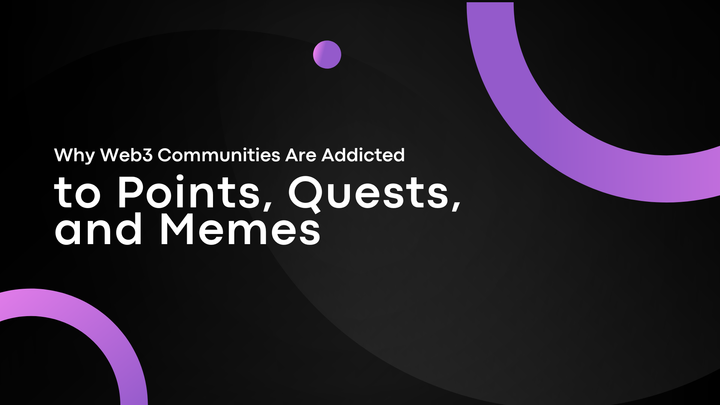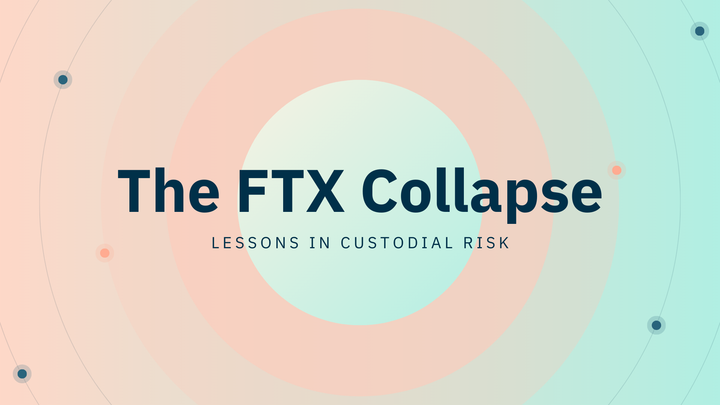The Digital Divide: How the Trump-Musk Rift Sent Ripples Through the Crypto Market and the Call for Unified Liquidity
Overview: When Political Drama Meets Digital Assets
The intersection of high-profile political figures, influential tech moguls, and the volatile world of digital assets often creates unpredictable market dynamics. This article examines the recent public feud between former President Donald Trump and entrepreneur Elon Musk, analyzing its immediate impact on the cryptocurrency market. We will dissect the origins of their dispute, the public exchange that ensued, and the subsequent financial repercussions. Furthermore, we will explore how such external shocks underscore the critical need for robust, unified liquidity solutions in the Web3 space, highlighting the potential role of the Mitosis protocol in building a more resilient and interconnected decentralized financial ecosystem.
Introduction: A Fractured Alliance in the Public Eye
The relationship between Donald Trump and Elon Musk, once characterized by mutual admiration and occasional collaboration, publicly fractured in dramatic fashion in early June 2025. This sudden and very public falling out between a former head of state and one of the world's most influential tech billionaires sent immediate shockwaves through various sectors, including the often-sensitive cryptocurrency market. Their past interactions, including Musk's brief stint in Trump's administration, had often been a subject of public fascination. The abrupt shift from perceived allies to public adversaries created a spectacle that quickly transcended traditional political commentary, spilling into financial headlines and sparking widespread speculation about its broader implications for digital assets.
The Genesis of the Rift: Policy and Personalities Collide
The public break between Donald Trump and Elon Musk originated from Musk's vocal criticism of a centerpiece of the Republican legislative agenda: a "big, beautiful bill" focused on tax cuts and spending reductions. Musk publicly denounced the legislation as "outrageous" and a "disgusting abomination," particularly after provisions dealing with electric vehicle subsidies were reportedly eliminated, a move that directly threatened the business interests of his company, Tesla. Trump, in turn, expressed his disappointment, claiming Musk had been "around for the whole process" of crafting the bill and only developed a problem when the EV mandate was removed. This policy disagreement quickly escalated into a deeply personal and public feud.
Escalation and Public Barbs: A Social Media Showdown
The dispute rapidly escalated into a full-blown social media showdown, primarily playing out on X (formerly Twitter) and Truth Social. Musk dropped what he called "the really big bomb," alleging that Donald Trump's name appeared in the files related to the case of Jeffrey Epstein, the disgraced financier. He provided no immediate evidence for this claim, but it immediately fueled conspiracy theories and drew widespread attention. Trump volleyed back on Truth Social, claiming he had asked Musk to leave his administration because Musk was "wearing thin" and had gone "CRAZY!" after the EV tax credits were removed. The former president also threatened to cancel Musk's lucrative government contracts, citing it as a cost-cutting measure for the federal budget. This exchange of insults and accusations reached new heights, dominating headlines and highlighting the volatile nature of public discourse involving such prominent figures.
Immediate Crypto Market Reaction: Tesla's Plunge and Ripple Effects
The public spat had immediate and tangible financial repercussions, particularly for Elon Musk's business empire. Shares of Tesla, his electric vehicle company, plummeted following the escalating feud, losing approximately $150 billion in value and closing down 14.3% on the day of the most intense exchanges. This significant drop in Tesla's stock price, a company closely associated with Musk's public persona, sent ripples of concern through the broader financial markets. Given Musk's historical influence on specific cryptocurrencies, particularly Dogecoin and Bitcoin, investors closely watched for any spillover effects into the digital asset space. The direct threat of government contract cancellations for SpaceX, a major player in space exploration, further amplified market anxieties.
Musk's Historical Influence on Crypto: The "Dogefather" Effect
Elon Musk has, for years, wielded considerable influence over the cryptocurrency market, often with a single tweet or public comment. His pronouncements on Bitcoin, Dogecoin, and other digital assets have frequently led to significant price swings, earning him nicknames like "the Dogefather." This influence stems from his vast social media following, his reputation as a visionary tech leader, and the perception that he represents a future-oriented, disruptive force. Therefore, any public dispute involving Musk, especially one with political undertones and direct financial threats to his companies, creates a palpable sense of uncertainty among crypto investors who are accustomed to reacting to his every word. The feud highlighted the market's vulnerability to the whims of influential personalities.
How might the cryptocurrency market reduce its susceptibility to the influence of individual public figures, fostering greater stability and maturity?
Political Volatility and Market Sentiment: A Broader Impact
Beyond Musk's direct influence, the public rift between Donald Trump and Elon Musk underscored how political volatility and high-profile feuds involving influential figures can affect overall market sentiment in the crypto space. Digital asset markets, while often touted as independent of traditional finance, are not immune to macroeconomic trends, regulatory shifts, or even the perceived stability of major economies. A public spat between a former president and a tech titan, involving threats of government intervention and accusations of political betrayal, introduces a layer of uncertainty that can lead to risk aversion among investors, potentially triggering sell-offs or dampening enthusiasm for new investments across the entire digital asset landscape.
The Broader Web3 Landscape: The Persistent Challenge of Fragmentation
As the Web3 ecosystem continues its rapid expansion, it faces a persistent and fundamental challenge: liquidity fragmentation. The proliferation of numerous Layer 1 blockchains, Layer 2 scaling solutions, and application-specific chains means that capital is often siloed within disparate ecosystems. This leads to inefficiencies in(https://example.com/defi-explained), such as higher slippage for traders, reduced market depth, and suboptimal capital utilization for protocols. Events like the Trump-Musk feud, which introduce external volatility, exacerbate the impact of this fragmentation, as capital cannot easily flow to more stable or opportunistic areas across chains.
Introducing Mitosis Protocol: Unifying Cross-Chain Liquidity
This is precisely where the Mitosis protocol offers a powerful and timely solution. Mitosis is a pioneering Layer 1 blockchain specifically designed to serve as a dedicated liquidity layer for the entire Web3 space. Its core innovation lies in the concept of Ecosystem-Owned Liquidity (EOL), which seeks to create a sustainable, community-managed pool of capital accessible across diverse blockchain environments. This approach aims to overcome the limitations of traditional, fragmented liquidity models by incentivizing long-term liquidity provision and aligning it with the collective interests of the ecosystem, thereby building greater resilience against external shocks.
The Mitosis Vault System: A Foundation for Sustainable EOL
Central to the Mitosis protocol is the innovative Mitosis Vault system. Users deposit assets into these vaults on various chains, becoming liquidity providers and receiving miAssets in return. These miAssets are canonical, 1:1 representations of the deposited assets within the Mitosis ecosystem. The creation and fungibility of miAssets are critical steps in enabling seamless cross-chain liquidity, allowing assets to flow freely and efficiently across different blockchain networks, regardless of external market noise.
DAO Governance: Community-Driven Liquidity Allocation
The Mitosis protocol operates under a decentralized governance model, specifically a(https://docs.mitosis.org/concepts/mitosis-dao). Holders of miAssets are granted voting rights within this DAO, empowering them to participate in key decisions regarding the protocol's development and, crucially, the allocation and management of the pooled liquidity within the Mitosis Vaults. This community-driven approach ensures that the liquidity is directed in a manner that best serves the collective interests of the ecosystem, optimizing capital efficiency across integrated chains and fostering stability.
How might a unified liquidity layer, like that proposed by Mitosis, fundamentally alter the response of the broader crypto market to sudden, high-profile external events?
Interoperability: The Secure Bridges of Unified Liquidity
To facilitate the seamless and secure movement of miAssets across different blockchain environments, Mitosis leverages robust and secure interoperability protocols. Protocols like Morse and Hyperlane provide the underlying infrastructure for secure cross-chain messaging and asset transfers. This ensures that miAssets can be reliably moved between chains without compromising security or incurring excessive costs and delays often associated with traditional, less secure bridging solutions.
Mitosis as a Stabilizing Force in Volatile Times
In times of heightened market volatility, such as those triggered by high-profile feuds or political instability, the Mitosis protocol could act as a significant stabilizing force. By aggregating liquidity from across numerous chains into a single, deep EOL pool, Mitosis can provide greater market depth and resilience. This means that even if a particular asset or chain experiences a sudden shock due to external news, the broader, unified liquidity pool can absorb the impact more effectively, reducing slippage and preventing cascading liquidations that often occur in fragmented markets.
Potential for Mitosis to Absorb Market Shocks
A deep, unified liquidity pool, managed by the(https://docs.mitosis.org/concepts/mitosis-dao), could help mitigate the impact of sudden market shifts driven by external factors like the Trump-Musk feud. When individual assets or specific chains face sell-offs, the ability to access liquidity from a much larger, interconnected pool can provide a buffer. This enhanced capital efficiency and market depth would allow for smoother price discovery and more orderly market reactions, reducing the severity of downturns caused by non-fundamental news events.
The Future of Crypto: Resilience Through Unified Infrastructure
The public dispute between Donald Trump and Elon Musk serves as a stark reminder that even the most influential figures can introduce significant volatility into the crypto market. This highlights the urgent need for the Web3 ecosystem to build more robust and resilient infrastructure. Protocols like Mitosis, by focusing on unifying fragmented liquidity across chains, are essential components of this future. A truly interconnected and deeply liquid decentralized financial system will be better equipped to withstand external shocks, providing greater stability and confidence for investors and participants worldwide, regardless of political or personal dramas.
Conclusion: Towards a More Resilient Digital Economy
The recent public rift between Donald Trump and Elon Musk, and its immediate impact on the cryptocurrency market, underscores the inherent sensitivities of digital asset valuations to external, high-profile events. While such volatility is a characteristic of nascent markets, it also highlights the critical need for foundational infrastructure that can foster greater resilience. The Mitosis protocol, with its vision for a unified Ecosystem-Owned Liquidity (EOL) layer, offers a compelling path forward. By creating deep, cross-chain liquidity pools managed by a decentralized community, Mitosis aims to build a more robust and interconnected Web3 financial system. This unified approach can help mitigate the impact of external shocks, ensuring that the decentralized economy can continue its growth trajectory with greater stability and efficiency, ultimately benefiting all participants.
Reflect and Discuss:
- What are the most significant long-term implications of high-profile political or personal feuds on the perceived legitimacy and stability of the cryptocurrency market?
- How might the(https://docs.mitosis.org/concepts/mitosis-dao) specifically design its governance mechanisms to respond to and mitigate the effects of sudden, externally-driven market volatility?
- Beyond liquidity, what other aspects of Web3 infrastructure need to be strengthened to reduce the impact of non-fundamental external events on digital asset valuations?
- Could the concept of Ecosystem-Owned Liquidity (EOL) be applied to other areas of Web3, such as decentralized social media or gaming, to build resilience against external pressures?
- What role do you foresee regulatory bodies playing in addressing the influence of individual figures on the crypto market in light of events like the Trump-Musk feud?



Comments ()